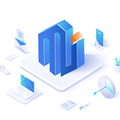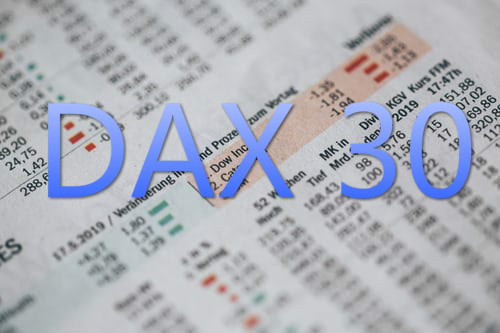How To Trade Indices? Index Trading Beginner's Guide for 2023

While there are different types of asset classes to trade at Mitrade, including Forex, Commodities, and Cryptocurrencies, Stock Indexes are one of the most popular and for good reason.
You can trade Stock Indexes like the Nasdaq, DAX, SPX500, AUS200, the US30 with Mitrade leveraged CFD trading account.
This article will introduce you to the exciting world of index trading and explain how to trade stock indexes like a pro. Don't worry, you'll learn the basics of indices and some of the best strategies employed by successful CFD index traders.
Without further ado, let's start our journey.
What Is Index Trading? How Does It Work?
Stock indexes have been around since the original Dow Jones Index was first created in 1885. Charles Dow, working at the Wall Street Journal, wanted a way to quickly aggregate the performance of the economy at that time.
The result was the Dow Jones Industrial Average, which was a gauge measuring the performance of the North American leading 30 industrial stocks, and therefore the broad economy as well.
Back in Charles Dow's day, there was no way to actually trade the index though. If an investor wanted to do that, it would have meant buying every stock in equal weighting. Not very practical at all. It wasn't until the first financial derivatives in the 1970s and the advent of stock index futures that trading an index became possible.
Stock index futures are mainly for large financial institutions and only the most affluent of traders. These days smaller retail traders also can speculate on the leading stock indexes throughout the world.
There are ETFs, Options, and we also have Stock Index CFDs, which are one of the primary products here at Mitrade.
Index CFDs is a simple but effective way for a trader to speculate from the direction of the stock indexes. Traders from all over the world day in and day out place trades on these markets. Some take quick intraday trading opportunities, others prefer short-term swing trading, while others prefer long-time frames lasting weeks or months.
With the leverage that CFDs allow, it opens up many opportunities for those who wish to partake in this very exciting and potentially lucrative business.
Index CFDs personally have a very special place in my heart. They were the first instrument where I made serious money.
For anybody wanting to learn the ropes of trading, Stock Index is a great entry-level product, something I will discuss more in-depth later on.
How To Trade Indices Online?
CFDs is one of the most popular ways to trade indices. They are traded on margin, meaning that for a small refundable deposit you can actually control a much larger trading position. You can also profit from both rising (going long) and falling (going short) markets.
Let's look at a trading example on the AUS200.▼

Step 1: You're using a MACD crossover system on a 15-minute chart
Step 2: The indicator is about to flip from red to green which is a bullish sign
Step 3: You place a market order at the buy price of 7077
Step 4: You add a protective stop loss 10 points below the current price
Step 5: You wait patiently for the price of the index to rise
Step 6: Plan to take profits 30 points higher for a 3 times risk-reward ratio
Trade Most Popular Indices on Mitrade: EU50/ FR40/ NAS100/ AUS200/ US30/ UK100/ HK50 and others.
Trade AUS200 Trade JPN225 Trade NAS100
Trade UK100 Trade SP500 Trade US30
Trade GER30 Trade CHN50 Trade EU50
Find The Best Indices To Trade For Beginners
Index trading takes place on many different indexes throughout the world, but the most popular with retail traders are the major world indices: Nasdaq 100, SP500, US30, Aus200, and DAX.
You can also find these indices at Mitrade trading platform▼

★ SPX 500
While the Dow remains the most famous index, it is not the biggest. That title goes to the SP500. This is a basket of the top 500 companies in the US by market cap.
Again, Facebook, Google, and Microsoft are all there. But their weightings in the index are much lower, and these days the SP500 is considered a better benchmark for the United States economy and the whole world.
SP500 index live price chart from Mitrade platform▼
★ Nasdaq 100
The Nasdaq 100 Index and the SP500 Index are two of the most well-known and commonly used stock market benchmarks in the US.
Nasdaq 100 Index represents the Nasdaq Stock Exchange's 100 largest non-financial corporations. These businesses are technological and innovation leaders around the world.
FAANG (Facebook, Apple, Amazon, Netflix, Google, or Alphabet) stocks, which are popular among the world's largest technological corporations, are included in the Nasdaq 100 Index. More than 50% of the index's assets are made up of technology businesses.
The Nasdaq 100 Index has produced excellent results. In the last 15 years, the Nasdaq 100 Index has grown at a compound annual rate of nearly 16%.
However, if the technology sector encounters volatility, the Nasdaq 100 index, as in the past, maybe go up and down sharply.
Nasdaq index live price chart from Mitrade platform▼
★ US30
As mentioned above the Dow Jones Industrial Average was the world's first stock market. And today it remains the most well-known of the world's indexes.
It was forever made famous in the market crash of 1929 that went on to usher in the Great Depression. The Dow has recovered from those days, with the index now pushing 30,000.
None of the original Dow components (the companies that make up the Dow) remains in the index.
The last one to be dropped was General Electric.
Still, today's traders will be familiar with the names that make up its components. Leading stocks such as Facebook, Alphabet (Google), Microsoft, and Amazon are heavily weighted in the DJIA.
US30 index live price chart from Mitrade platform▼
★ AUS200
AUS 200 is the leading stock index in Australia. It is very popular because it is a leading benchmark of not just Australia but Asia generally.
Many of its components are affected by what happens in China. If China is booming, then the AUS200 rides high. If China is faltering, then so is the AUS200.
The index has a large weighting of mining stocks. The world's largest miner BHP Billiton is listed there. As is another behemoth Rio Tinto. This mean during commodity booms the index tends to outperform other world markets.
However, the index also has a diverse range of industries including financials, consumer goods, real estate, and tech, which still make the index a decent proxy for the Australian economy in general.
AUS200 index live price chart from Mitrade platform▼
★ DAX30
DAX 30 index is one of the most commonly traded indicators in the world, because the DAX30 trend is easy to notice, making it the most popular trading market.
The DAX 30 index, known as GER30 or DE30, includes the top 30 most valuable companies on the German stock exchange. It symbolizes Germany's economy and contains some of Europe's most important industrial and technology firms.
The DAX index has increased in value from 1,000 to around 11,000 since its inception in 1988, which is a 1,000% gain.
DAX30 index live price chart from Mitrade platform▼
★ UK100
FTSE100, known as the UK100 among CFD traders. The biggest companies in the UK100 comprise HSBC, BP, Royal Dutch Shell, and Vodafone. These are the stocks that have the most pronounced effect on any moves in the UK flagship index.
Note the large presence of oil companies, while the AUS200 is primarily a mining benchmark, the UK100 is often considered an oil benchmark.
The UK is also in a unique position. With its geographical location straddled between Asia on one side and the United States on the other, it offers some supreme trading opportunities for those who know how to play the time zones.
FTSE100 index live price chart from Mitrade platform▼
Trade On A Simplified Platform For Index Trading
Mitrade is an award-winning broker regulated in Australia by the ASIC. Index Stocks are a major part of the service that they offer to clients, you can also get competitive spreads on other markets, such as forex, us stocks, gold, commodities, and cryptocurrencies.
Practice Makes Perfect
- Register a demo account for free and level up your trading skills.
- At the same time, enjoy a sum of $50,000 virtual money to practice and formulate your best strategies before switching to a live account. Practice Now ››
Advantages Of Index Trading With CFDs
There are many advantages of trading stock index CFDs.
● high leverage
● less risk than individual stocks
● long and short trading
● tight spreads
● natural bias to the upside
● less intraday volatility than other asset classes
It is the last two that I wish to discuss in more depth. These two are rarely discussed makes all the difference to your trading results.
Yes, you can indeed go short stock indices, and make money very fast if you can get your market timing correct.
The crash of 2008, the Taper Tantrum of 2010, and the Flash Crash of 2013 are all testament to that.
But besides the often brief but sharp sell-offs, stock indexes do actually spend most of the time in uptrends.
Why is this?
Well, as in the case of the Dow as talked about previously, poor-performing companies are dropped over time from an index. And in turn, replaced by star performers. This gives the index a natural drift upwards.
Also, there is simply too much money out there among hedge funds, pension funds, investment funds, and mutual funds and all of them need to spend it somewhere!
This is good for you because, let me you, from all my experience trading CFDs, it's much easier to make money on the long side than the short side.
Few will tell you this. But it will dramatically improve your trading results!
Stock markets just go up easy than they go down, and at the end of the day, the job of a trader is to take the line of least resistance – which is usually up.
When you trade from the short side, not only do you have players who want to buy at support levels, you also have players who want to close their short positions.
This leads to something known as a short squeeze.
These happen frequently and can test the nerves of short-side traders, leading to irrational decisions.
It's my opinion, trading from the long side can be much more profitable when it comes to Stock Index CFDs.
Also, intraday volatility tends to be much less in stock indices than say in Forex or commodities.
Again, this can lead to irrational and emotional decisions if you are currently lack trading experience. Which all go to make Stock Index CFDs the best entry-level instrument for traders.
What Are The Best Strategies For Trading Indices?
If you're wondering how to trade stock indexes there are actually many ways. It's impossible to list them all here. But I can mention three of the most common ways that traders choose to approach the market.
Day Trading
This is often the hardest way to start, however, there are some methods easier than others. Opening range breakouts are one such way.
The highest point the market gets to within the first hour is considered the day's resistance level.
You can place any entry order just above this price level, and should the market then move above it, the likelihood is that it will continue for the rest of the day.
Short-term Price Action Trading
A short-term position trader might hold a trade for three or four days. Some very simple pattern trading opportunities repeat regularly throughout all markets.
These include setups such as inside bars, pin bars, or pivot highs. All these are very suitable for short-term position trading.
Trend Trading
This is often done off weekly charts. Many of the same setups that work on daily charts also work on this timeframe. Weekly trading requires patience, but setups on this timeframe are much more accurate than on the lesser ones.
With weekly chart trading, there is a better opportunity to incorporate fundamental analysis into the decision-making process.
Conclusion
Index trading in my opinion is the best way for beginners to get started in this business. Yes, other markets might be more exciting, moving faster and stronger, but that does not always want a beginner's needs.
The natural bias to the upside in indices cannot be overstated.
And because of intraday volatility when Stock Index trading is lower, those who haven't quite yet mastered the psychological aspects of trading can still find early success.
If you're serious about being a trader trading Stock Index, try to trade with a demo account. Mitrade provides $50000 practice funds allowing you to master your strategies before trading in real-world.
You ll find the trading platform simple and intuitive with fast execution.
Happy Trading! :)
Trade on Indices Price Moves in 3 Steps:

* The content presented above, whether from a third party or not, is considered as general advice only. This article should not be construed as containing investment advice, investment recommendations, an offer of or solicitation for any transactions in financial instruments.
- Original
- Trading Analysis
Risk Warning: Trading may result in the loss of your entire capital. Trading OTC derivatives may not be suitable for everyone. Please consider our legal disclosure documents before using our services and ensure that you understand the risks involved. You do not own or have any interest in the underlying assets.




